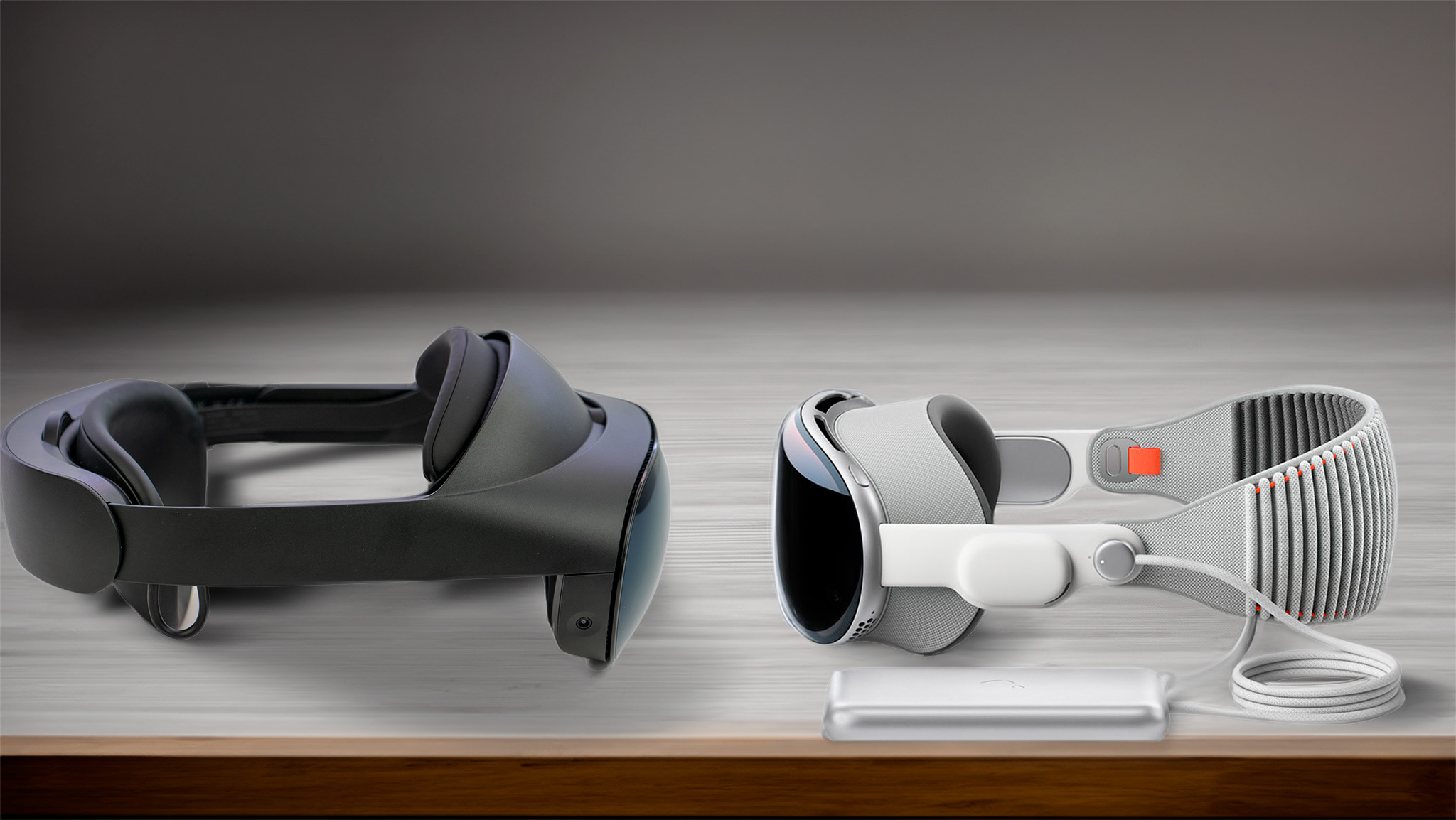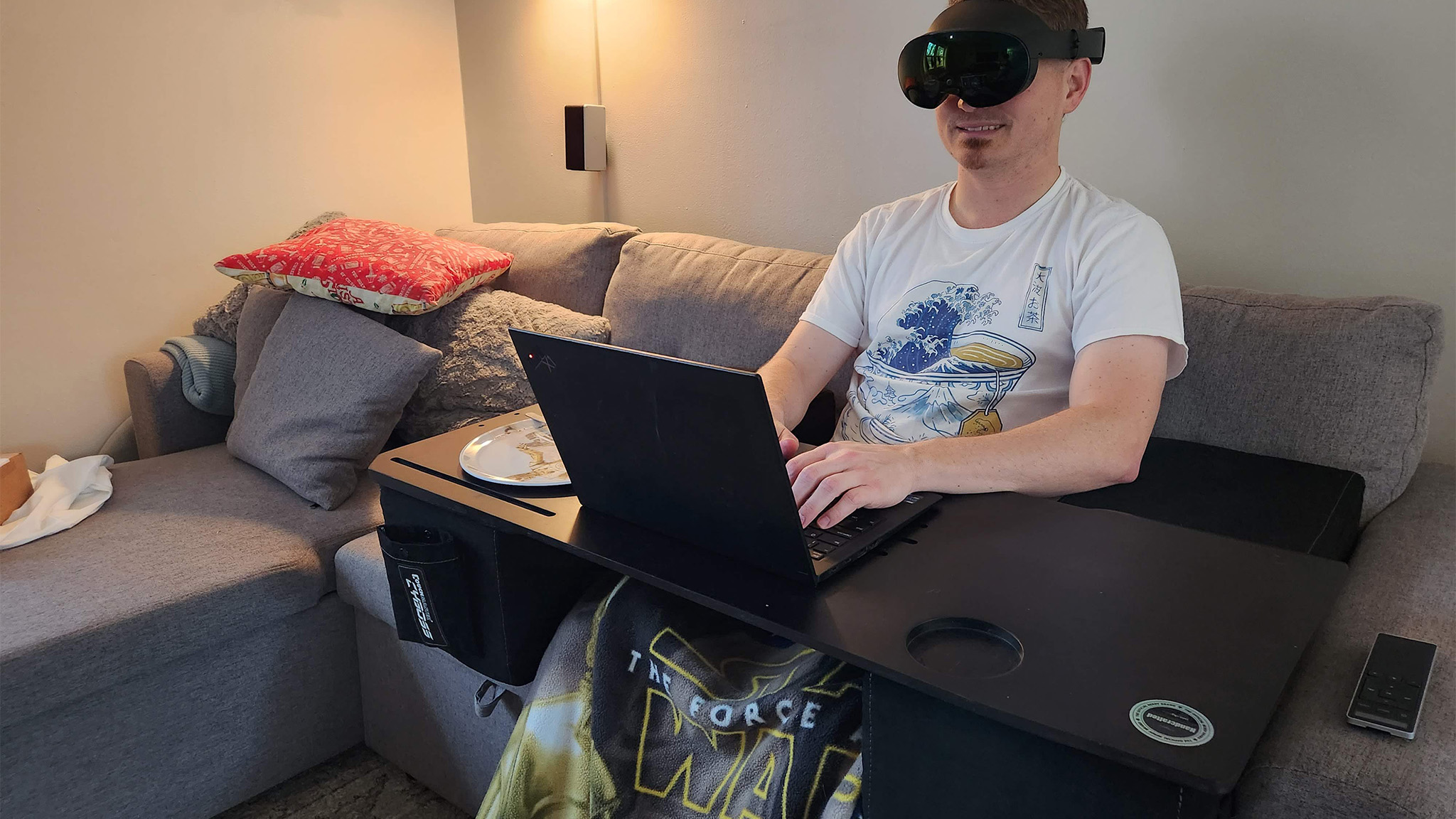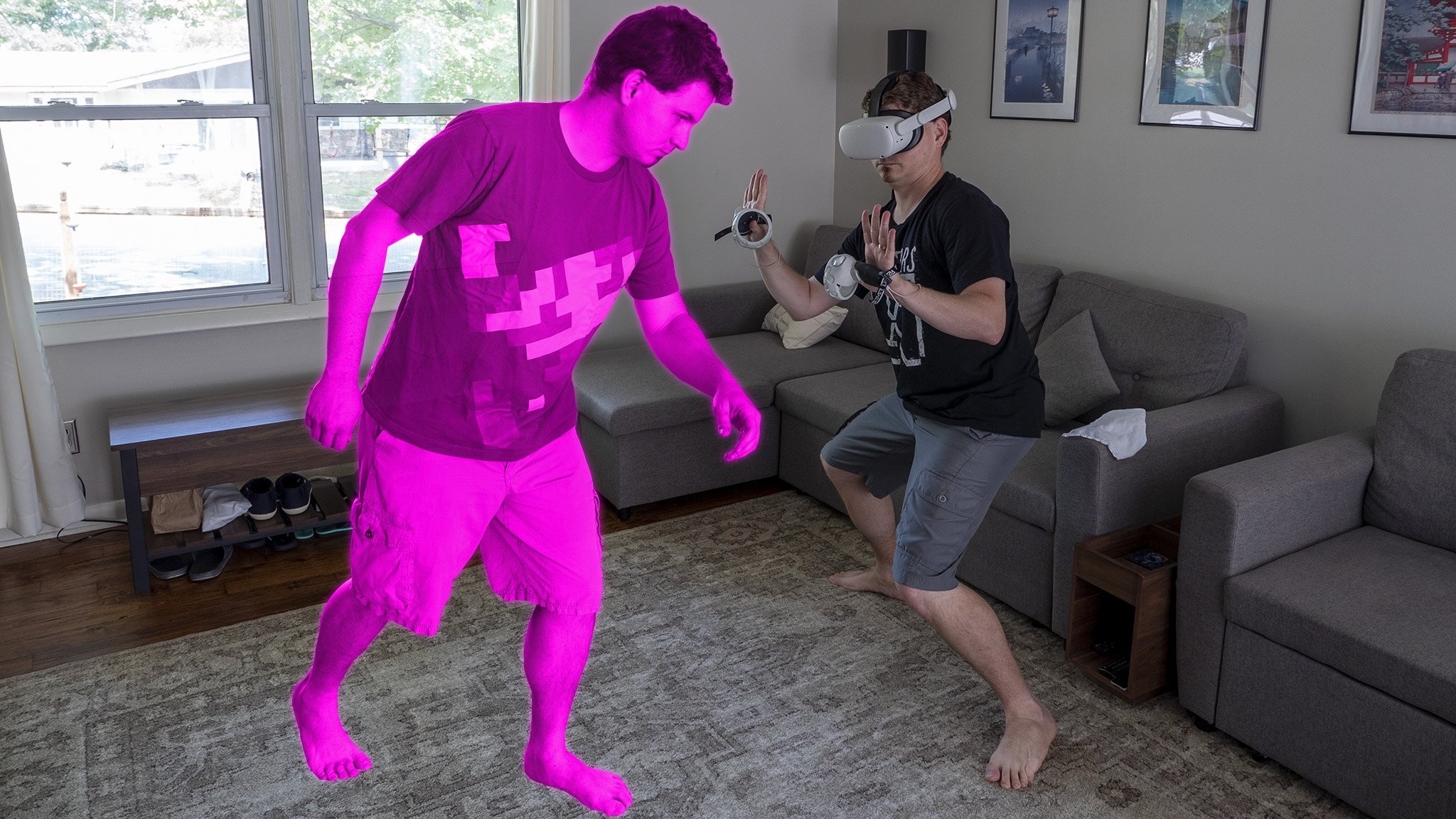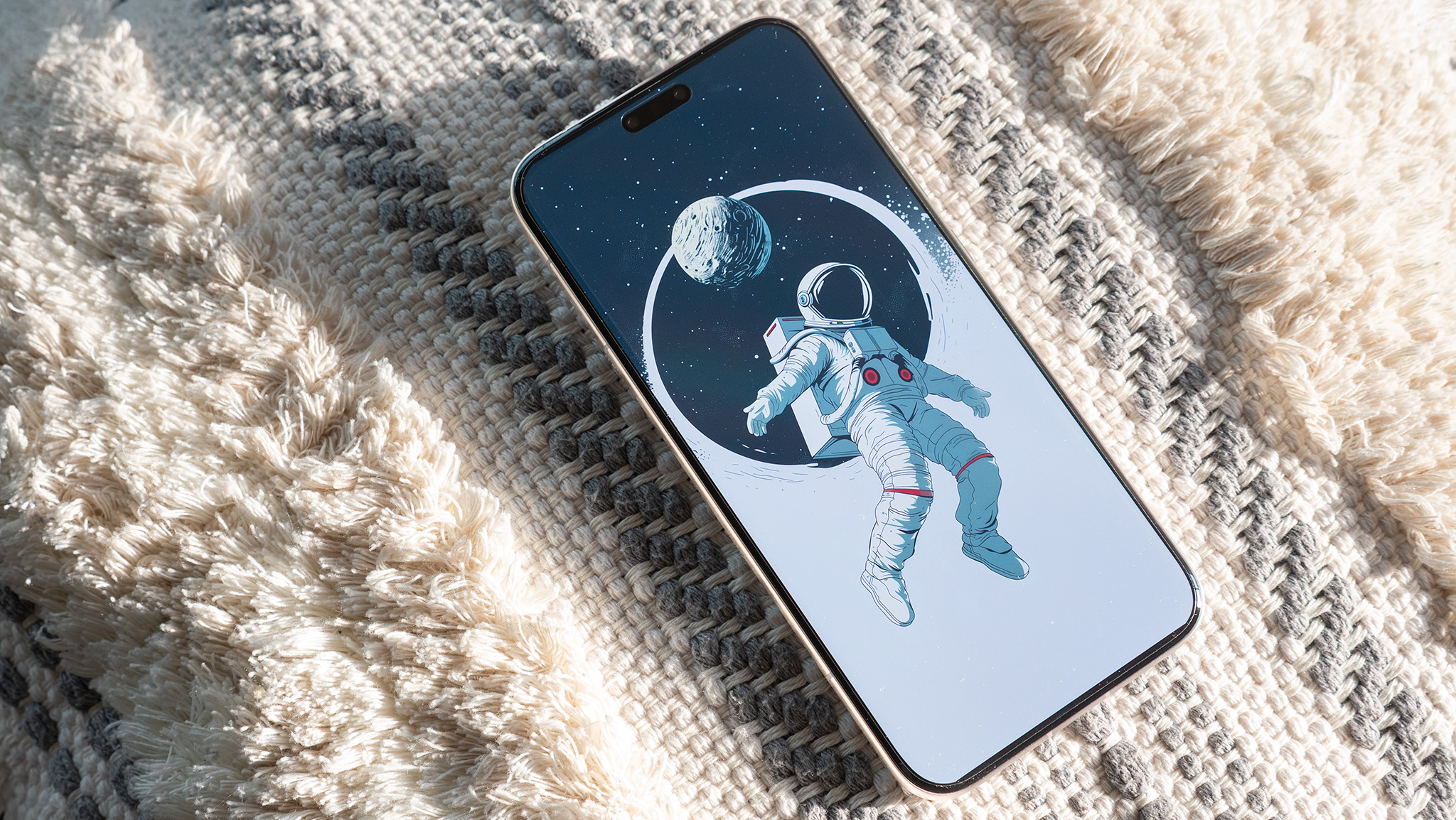Apple’s Vision Pro is proof that Meta’s Quest was right this entire time
The Quest has been a huge driver of innovation over the years. Meta just needs to get better at implementing it.

As I'm writing this article from the comfort of my Quest Pro — yes, I really did use those words in the same sentence — I marvel at just how much Meta has gotten right over the past few years.
The same company that is responsible for the infamous "lo-fi Zuckerberg in Paris" meme really did pioneer most of the tech we're seeing in the $3,500 Apple Vision Pro. It launched so much of this tech in the $399 Oculus Quest back in 2019 and is substantially improving all of it in the $499 Meta Quest 3 later this Fall.
And that brings me to my point. While Apple's headset no doubt has a more Apple-like aluminum-and-glass design, existing Meta headsets like the $299 Quest 2 already let you experience so much of what Apple is charging ten times the price for. And headsets like the Quest Pro give you the option to work in VR without having to be locked into Apple's infamous walled garden to get it.
Mixed reality on your face

When you boil down all the jargon used at Apple's WWDC 2023 conference, one thing is clear. Apple Vision Pro isn't a VR headset. It's a spatial computing device. This isn't a VR headset that will immerse you more into brand-new types of games or experiences. It's designed to be an "iPad for your face" and not much else.
All of the experiences Apple showed off at WWDC — save for maybe the meditation app or the NBA experience shown off during the Disney portion of the show — were 2D apps that now exist in 3D space instead of on a screen.
Meta tried to do this last year when it launched the Quest Pro which the company internally referred to as "a Chromebook for your face" but, ultimately, failed to convince people that the experience was worth $1,500. The Quest Pro sells for $999 today, signaling that it was a bit too expensive for what you got.
So what in the world makes Apple think it can charge $2,500 more than the Quest Pro and get away with it? Aside from the obvious "because it's Apple" answer, the real answer lies in the base experience.
Get the latest news from Android Central, your trusted companion in the world of Android
Apple nailed the base experience better than Meta did, but the Quest can do so much more.
With the Quest Pro, Meta debuted full-color passthrough vision — meaning that you can "see through" the vision-obscuring VR headset thanks to cameras on the device — but the resolution was low, colors weren't great, and things still looked fuzzy and unrealistic.
By all accounts from folks who have used it so far, Apple Vision Pro gets this experience right with lifelike color passthrough and superb display resolution. It also gets something right that Meta has struggled with for years: the UI.
Most folks who have used the headset confirm that Apple has nailed the input. You navigate just by looking at something and tapping your thumb and index finger together. You don't have to point at it using your finger or a virtual laser pointer. You just look at it.
The Quest Pro has eye tracking and theoretically can do this but Meta still requires users to point at it and hold their arms up too often. We're lazy as a species and Apple is playing well into this fact.

Apple released a 20-minute video showcasing the company's new spatial input design language, a clip of which can be seen in the above GIF. Meta's biggest problem over the years has been not just UI consistency — the company seems to change the Quest's UI drastically every few months — but also design quality.
Many users have complained that it's difficult to find important settings, meeting up with friends is too cumbersome, and general input is lazily designed. That last part mainly refers to the fact that most UI elements — both the system and in lots of games — almost always default to using a "laser pointer" to get around.
Earlier this year, Meta launched the Direct Touch UI that allows users to use their hands to directly tap UI elements and scroll on virtual displays like they would on a smartphone screen. These are important steps to getting the UI to feel more natural and I hope that Meta continues to improve things based on what we're seeing from Apple.
After all, what gadget in the tech industry doesn't 'steal' from other popular gadgets to improve the overall UI? Apple certainly does it all the time.
Apparently, Apple thinks you want to work with a headset on your head, too.
And while Meta caught lots of flak from critics for trying to convince people that they want to do work from a virtual office while wearing a VR headset, Apple seems to think the same will be true of their headset.
Just like Meta's announcement, Apple focused on the future of working "from giant virtual screens" and using multiple virtual monitors to get more work done without having to be tethered to the same desk all day.
We even saw mention of Microsoft Office "playing nice" with Apple's headset — a similar partnership with Meta was announced with the launch of the Quest Pro last year. Nearly everything from the announcement apes what Meta has been doing for years, albeit, what was shown all looked better executed than Meta has been able to do.
Meta has announced lots of great things over the years but often struggles to follow through on promises.
But Meta has had issues with following through with many of its announcements like this. Back in 2021, Meta announced that lots of 2D apps would be coming to Quest. Today, only a handful actually exist. That Microsoft partnership I mentioned in the paragraph above is one great example because we have yet to even see those apps appear on the Quest store.
But here's one bright silver lining for working from a Quest: you don't have to use an Apple computer or an Apple phone to make it work. You can use these if you want, though. The difference is that you aren't restricted from using a PC or an Android phone if that's your preference. Meanwhile, there's almost no way Apple Vision Pro will ever work officially with a PC or an Android phone.
Mixed Reality is more than just spatial computing

Apple also isn't worried at all about room setup because its headset can effortlessly understand the room you're in without going through this menial task. Sony's PSVR 2 sort of does this and can automatically scan the room, but it has a hard time "remembering" the surroundings and often has to rescan every time I put the headset on to play.
Meta's Quest 3 will likely solve this issue thanks to the pairing of an IR projector — that's the same tech the iPhone has been using for FaceID for years — and a depth sensor, two pieces of tech that should have shipped with Quest Pro but didn't.
These two pieces of technology make it easy for the headset to see the room around the user and understand the spatial relationship between objects. Walls are walls, furniture is furniture, and your arm or finger can be part of the experience.
Meta has been doing these things all along, and the Quest 3 should do them better than ever.
The irony is that Meta has been doing these things all along. Hand tracking has been present since the original Quest, even if it's not as elegant as what Apple showed off this week. Passthrough vision has been around for years and many scoffed at its importance when Meta first announced it.
Plus, Meta's work in AI has produced significantly better hand tracking over the years, plus the ability for its Quest headsets to understand what a couch is and how to adjust the usable play space when a user decides to sit on it.
During one segment, Apple showed off how people wearing its headset using "immersive experiences" will still be able to see others in the room when they get close. Meta launched this exact feature in 2022 — called Space Sense — and it works rather well.
The big difference here is that the person in the room looking at you can't see your eyes, unlike with EyeSight on Apple's Vision Pro. The irony, again, is that Meta showed off this exact technology back in 2021, even if it wasn't in a proper consumer product yet.
The Quest 3 will combine better hardware with Meta's AI expertise to create the best experience yet.
From what we can tell, the $500 Meta Quest 3 will be able to do almost anything the $3,500 Apple Vision Pro can do when the Quest 3 launches this Fall. Will it do everything as well as the Vision Pro? Not likely. There's a reason Apple's headset costs so much more.
But can it do more than Apple's headset? Yes, and a lot of that stems from Meta's newfound gaming focus and the debut of several big-name games at the 2023 Meta Games Showcase last week. Personally, I'd rather have that than just a boring old iPad for my face.

Get the Quest 2 for the best price ever starting June 4! Plus, experience the new performance boost and soar through more detailed VR worlds than ever.

